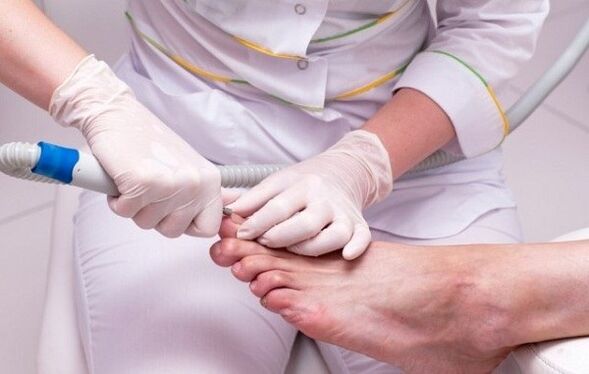Onychomycosis, or onychomycosis, is an unpleasant disease that may not be noticed right away.The fungus can destroy your nail plate, causing discomfort and pain, and may cause soft tissue lesions if treatment for onychomycosis begins.Fungus can easily spread to healthy fingernails or toenails, posing a huge risk to your health and the health of others.
If you have any questions about the health of your nails, your best bet is to schedule an appointment with a dermatologist.Treatment can bring positive results only with complex treatment, including a course of medication, regular foot hygiene and special treatment of the nail plate.

Main symptoms of fungal infection:
- Weak and rough nails
- deck deformation
- The presence of inflamed tissue around the nail
- Delamination, thickening, or thinning of the deck
- Brown, black, or yellow areas on the nails.
How to get onychomycosis?
Routes of infection of onychomycosis.If you follow hygiene rules, have good immunity, have healthy and well-groomed skin, the risk of contracting a fungus is low.Fungi usually enter the body through scrapes, cuts, cracks, and injured areas of nails and skin.Excessive sweating, dry skin, or wearing tight shoes can promote the growth of fungus.
You are more likely to get onychomycosis if:
- Do you have varicose veins?
- Decreased immunity
- You're wearing airtight rubber shoes
- Have endocrine and vascular diseases
- Have been in contact with someone infected with a fungus
- Have flat feet.
What harm does onychomycosis do to humans?
In the advanced stages of onychomycosis, onychomycosis can cause allergic reactions, be toxic to the body, and may affect internal organs.
How to Treat Onychomycosis?
To treat onychomycosis, you can use topical medications - creams, ointments, patches - that can also be used at home.There are a variety of sprays available that have strong anti-fungal, anti-inflammatory and antiseptic properties.
In the early stages of the disease, it is recommended to use sprays or creams. Don’t forget that treating onychomycosis is more than just getting rid of the external manifestations.During treatment, the dermatologist will prescribe systemic medications.The drug can be prescribed in tablet form and given over a course of three to six months.

The most common mistakes when treating onychomycosis
Moisture for feet.Fungi in the form of spores are everywhere around us.When skin humidity exceeds 80%, fungal spores begin to multiply and infect the nail plate and surrounding skin.
Fungal spores are present on the object.When you steam your socks, you can kill any active fungal spores that remain on your socks.If this is not done, then starting from the spores, in the presence of moist skin of the feet (favorable environment), high humidity of the shoes, the fungus begins to actively multiply.
Shoes are hygienic.When starting to treat onychomycosis, be sure to treat any shoes you wear.Use a personal towel just for your feet.
Fungal spores remain on the instrument.All nail cutting tools must be treated with disinfectant; it is recommended to use disposable files to care for affected nails.If there are fungal spores remaining on the tools, then you can remove them manually for years, cutting off traces of the fungus along with your nails, but this will not bring any results.
What should you pay attention to when treating onychomycosis?
If you don't follow the recommendations while treating onychomycosis, you may experience a recurrence.Try to keep your feet clean and change your socks every day.Wearing the right shoes is very important to prevent your feet from getting sweaty.After any water treatment, dry your feet, paying special attention to the area between your toes.
Use a separate foot towel and must dry it after use.If your shoes get wet, dry them immediately.It is recommended to change indoor shoes at least twice a year during treatment.Soaking your feet in soda and salt can also be helpful.Feet should be washed daily using laundry soap or tar soap.
Always observe hygiene rules when visiting public places: saunas, hammams, hammams, swimming pools.Don't self-medicate; it's best to contact a dermatologist who will prescribe a course of treatment so you can get rid of onychomycosis quickly, saving you time and energy.























